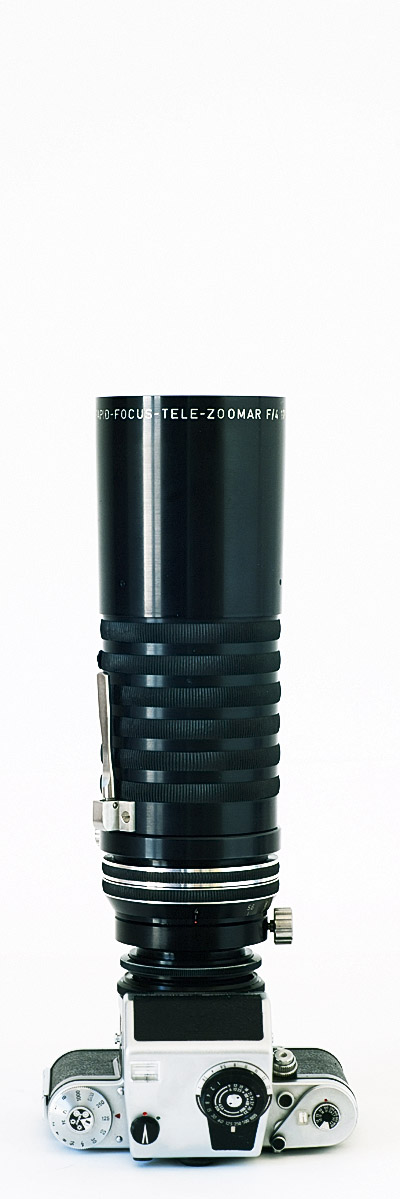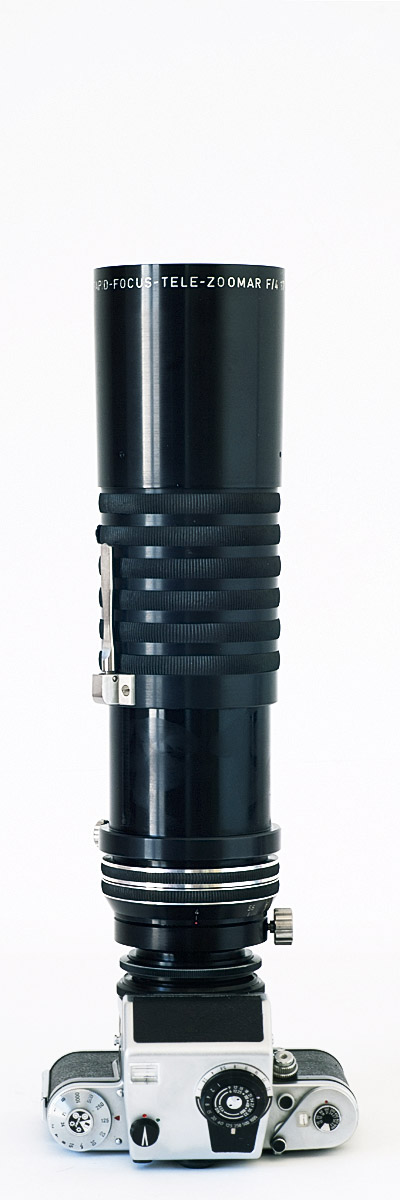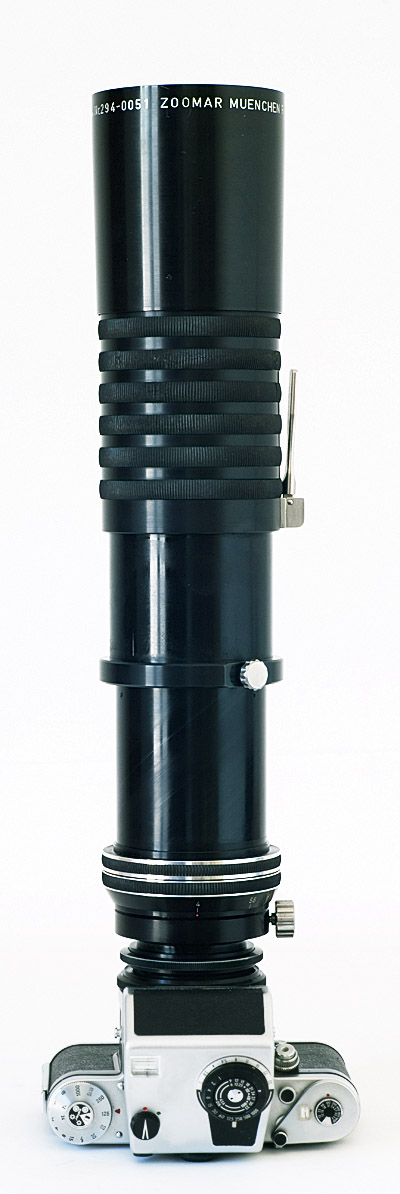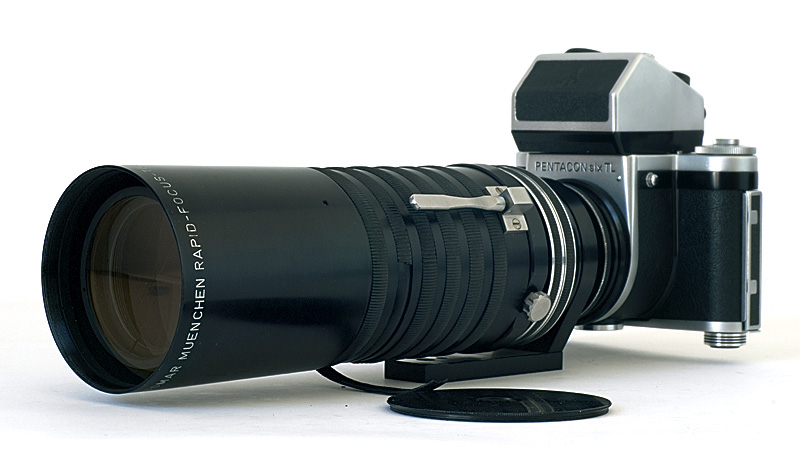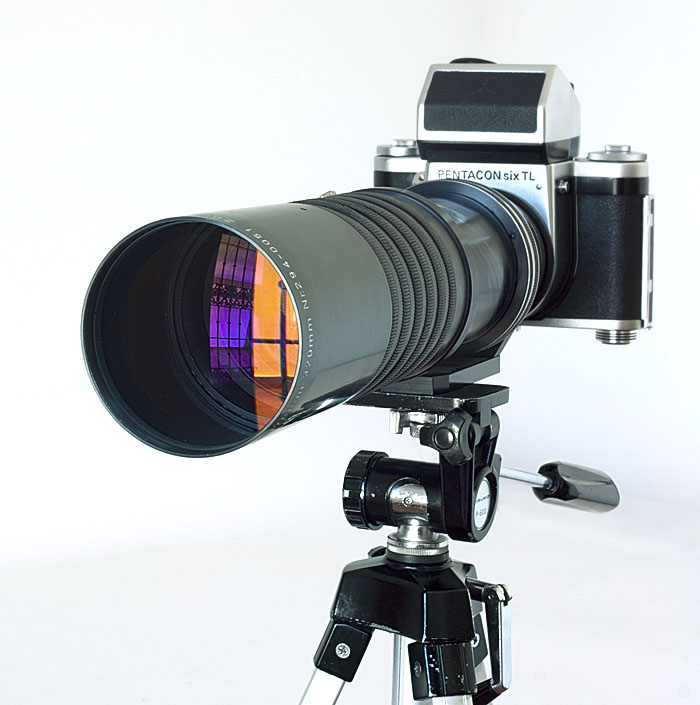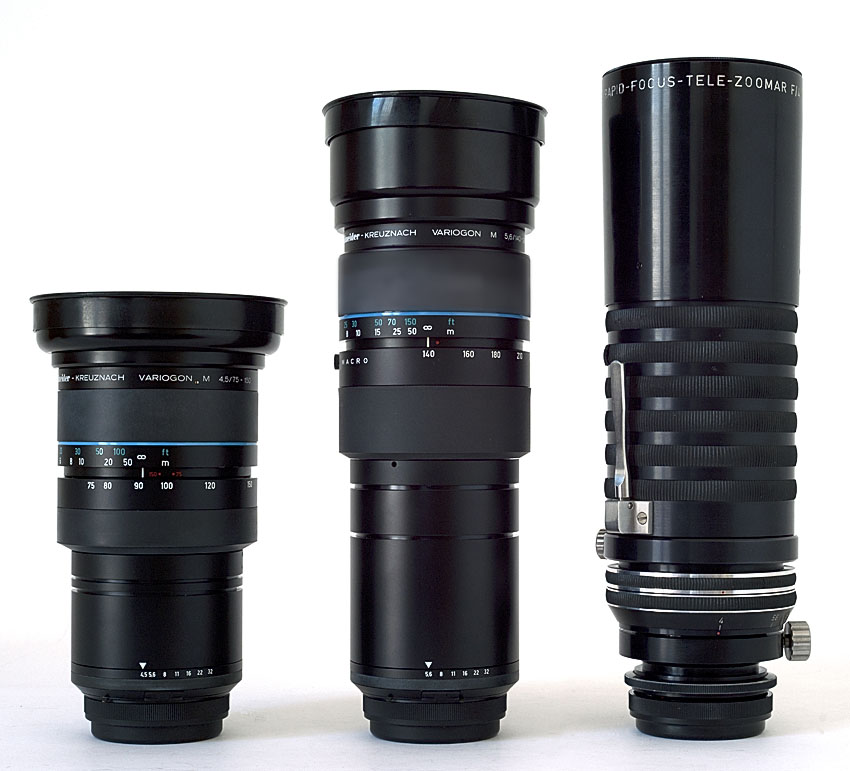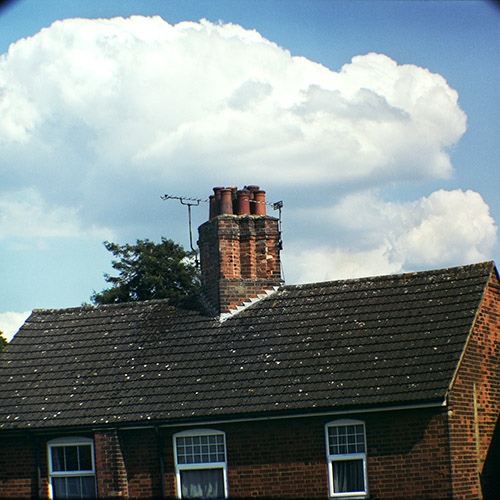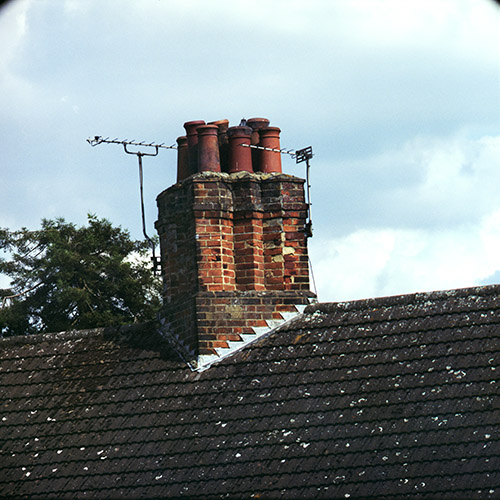by TRA
The Zoomar
170-320mm f/4 lens for the Pentacon Six
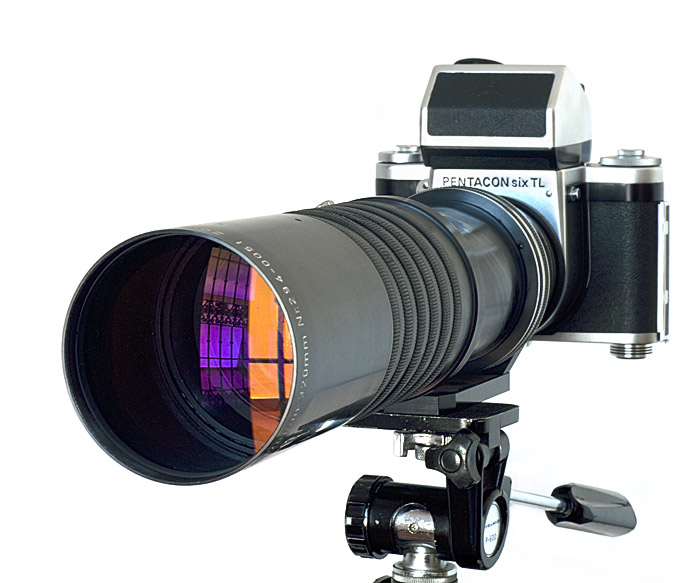
[zmr_13.jpg]
This lens was made in the highly-esteemed Kilfitt factory in Munich in southern (West) Germany, apparently starting in the late 1960s. The Zoomar 170-320mm was the first zoom lens for a Medium Format camera. It has a total zoom range of not quite 2× (a little over 1.88×).
It is reported that when Heinz Kilfitt retired in 1968, the Kilfitt company was sold to the American Zoomar company that re-branded the lens range with the name “Zoomar”. However, it would appear that the lenses were still manufactured in Munich. This lens bears the engraving “ZOOMAR MUENCHEN RAPID-FOCUS-TELE-ZOOMAR F/4 170mm-320mm Nr. [and the serial number]”. “MUENCHEN” is a way of transcribing the German name for Munich, München, when the u-umlaut (“ü”) is not available on the keyboard (or in former times, with telegrams, for instance). The lens is also engraved “Lens made in West Germany” on the collar for the tripod plate.
Zoom lenses for Medium Format cameras have always been rare, expensive, large and heavy, and this lens is no exception to that rule.
This lens was available for a range of Medium Format cameras with focal plane shutters. For use on the Praktisix/Pentacon Six it requires the “WESI” mount on a WE base. The WE base is held in place with four screws, and both the base and the mount can be changed if required, in order to mount the lens on other cameras – always assuming that you can find the appropriate mount or can get one made.
The weight of this lens with the Praktisix/Pentacon Six mount in place is 3080g. Its minimum length when mounted on the Pentacon Six from the front plate of the camera is 31.8 cm (a little over 12 inches). Its maximum length on full zoom and closest focus is 46.8 cm (a little over 18 inches). Its largest diameter: is 101mm (approx 4 inches). To this must be added the size of the tripod-mounting plate or platform.
| The
aperture
This is a manual aperture lens, so there is no automatic lens aperture operation and no aperture pin. The maximum aperture is f/4, which is large for a medium format lens of the focal lengths covered by this lens. The minimum aperture is f/22 The aperture ring is the ring nearest the back of the lens (closest to the camera). A ring immediately in front of the aperture ring engages and dis-engages the click-stop mechanism:
Markings on the lens Apart from the name, country of manufacture and aperture values, there is no other lettering on the lens: no indication of focussing distance, no index mark and no indication of the zoom setting. In consequence of this, there is of course also no depth-of-field scale. This is not surprising, since the the depth of field would vary with the zoom setting. Subsequent manufacturers sought to overcome this with diagonal lines running along the barrel and/or lines of different colours, but in practice these are usually difficult to read, so that most users end up doing what users of this lens must do: focus and compose on the focussing screen in the camera – which is what one is meant to do with SLRs, anyway. It is a significant design achievement that this lens holds its focus throughout the whole zoom range. |
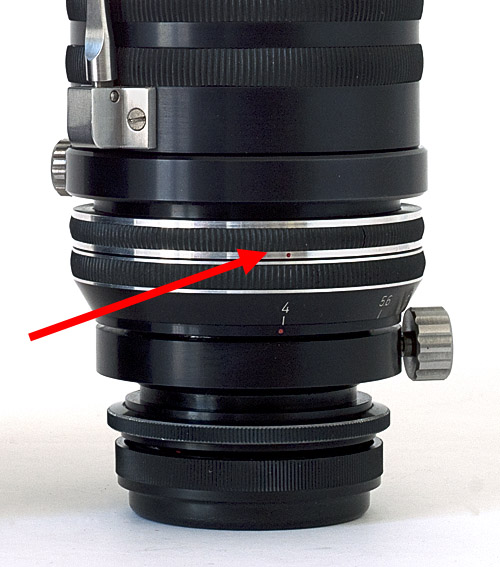 Aperture click-stop engagement ring (arrowed) [apclick.jp |
Rapid Focus
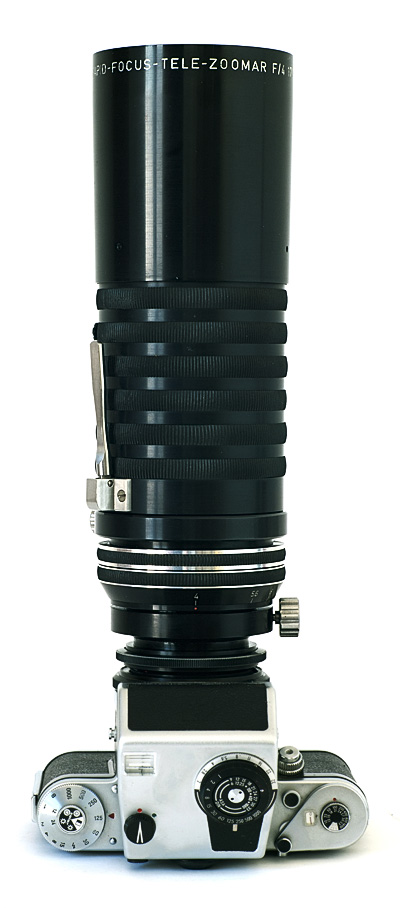 [zmr_05.jpg] |
This lens is described as “Rapid
focus”: note the long chrome-colour lever that
is here visible in the image to the left, on the
left-hand side of the lens. Press this
lever down and push the front of the barrel away
from you to achieve closer focus.
Releasing the lever at any point locks the focus
in that position. So this is a rectilinear
(straight line) focussing action, not the
helical (twisting) action that is on most
manual-focus lenses. Tripod platform Underneath the lens (to the right in the image on the right here) is a large plate or platform for locking onto a tripod. This plate is connected to a collar on the lens and can be rotated to get the camera horizontal (or to any other desired angle). The tripod plate collar is lockable in any position with the large chrome knob that is arrowed in this photograph. This is a large and heavy lens with a long focal length range. One would normally expect to use it on a tripod. |
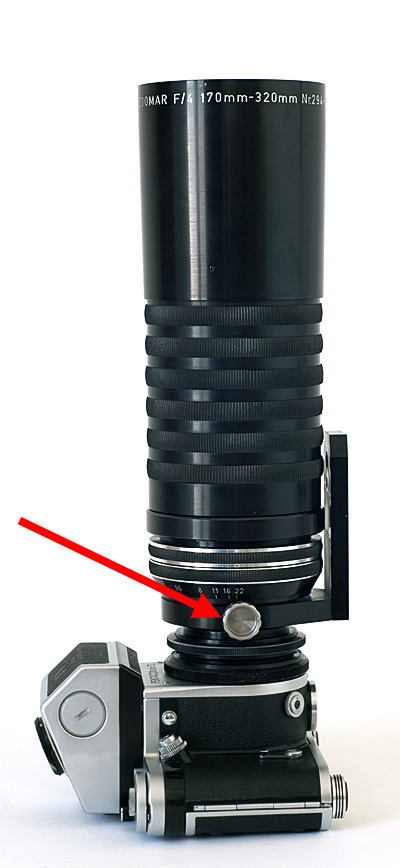 [zmr_06.jpg] |
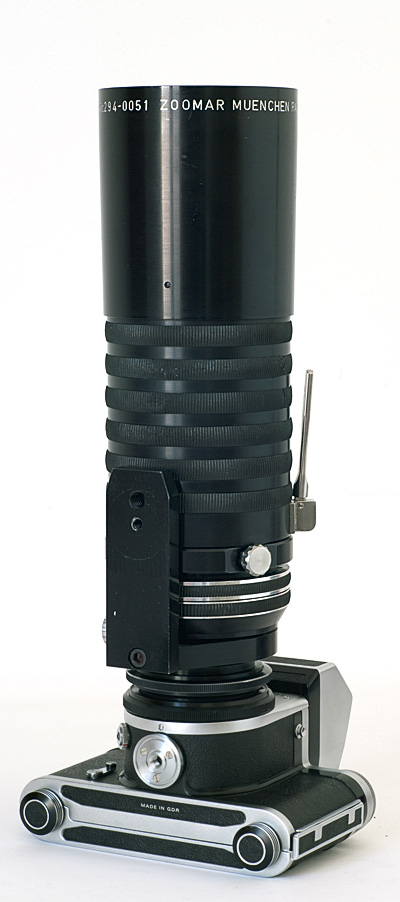 [zmr_04.jpg] |
A view of the under-side of the
lens reveals that the tripod plate has two
tripod screw sockets in it – one for 1/4" and
the other for 3/8".
Zoom control The chrome knob just to the right of the tripod plate in this image is the zoom locking knob, which enables the zoom to be locked in any desired position. Unlike the focussing movement, which is rectilinear, the zooming movement is helical. In other words, the principal portion of the lens (the front sections) rotates clockwise (when viewed from the camera operator’s position) as the zoom is increased. So the Zoomar has rectilinear focus but helical zoom action – the opposite of what was adopted, years later, by most other manufacturers of zoom lenses, who went for a standard rotating focussing ring (as on non-zoom lenses) and generally a straight push-pull zoom action. However, the Zoomar was the first medium format zoom lens, and this is how they decided to design it. It is possible to zoom and focus with one hand. If one loosens the zoom locking knob (with one's left hand), one can put one's right hand round the lens and press the focus lever down to focus (by pushing and pulling), and rotate the lens, also by holding the base of the focus lever, to vary the zoom. This makes these two actions very fast and easy. |
